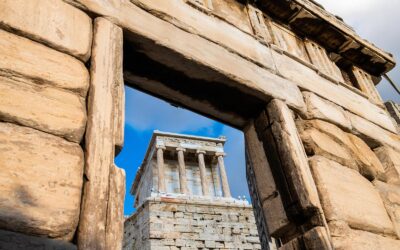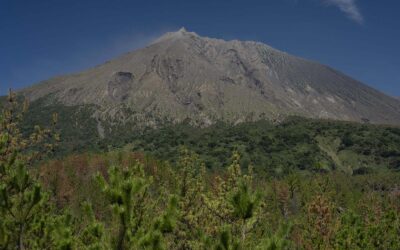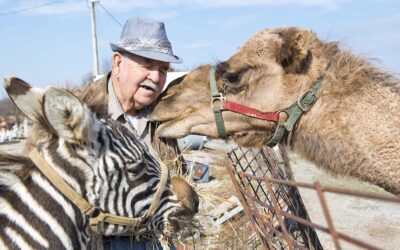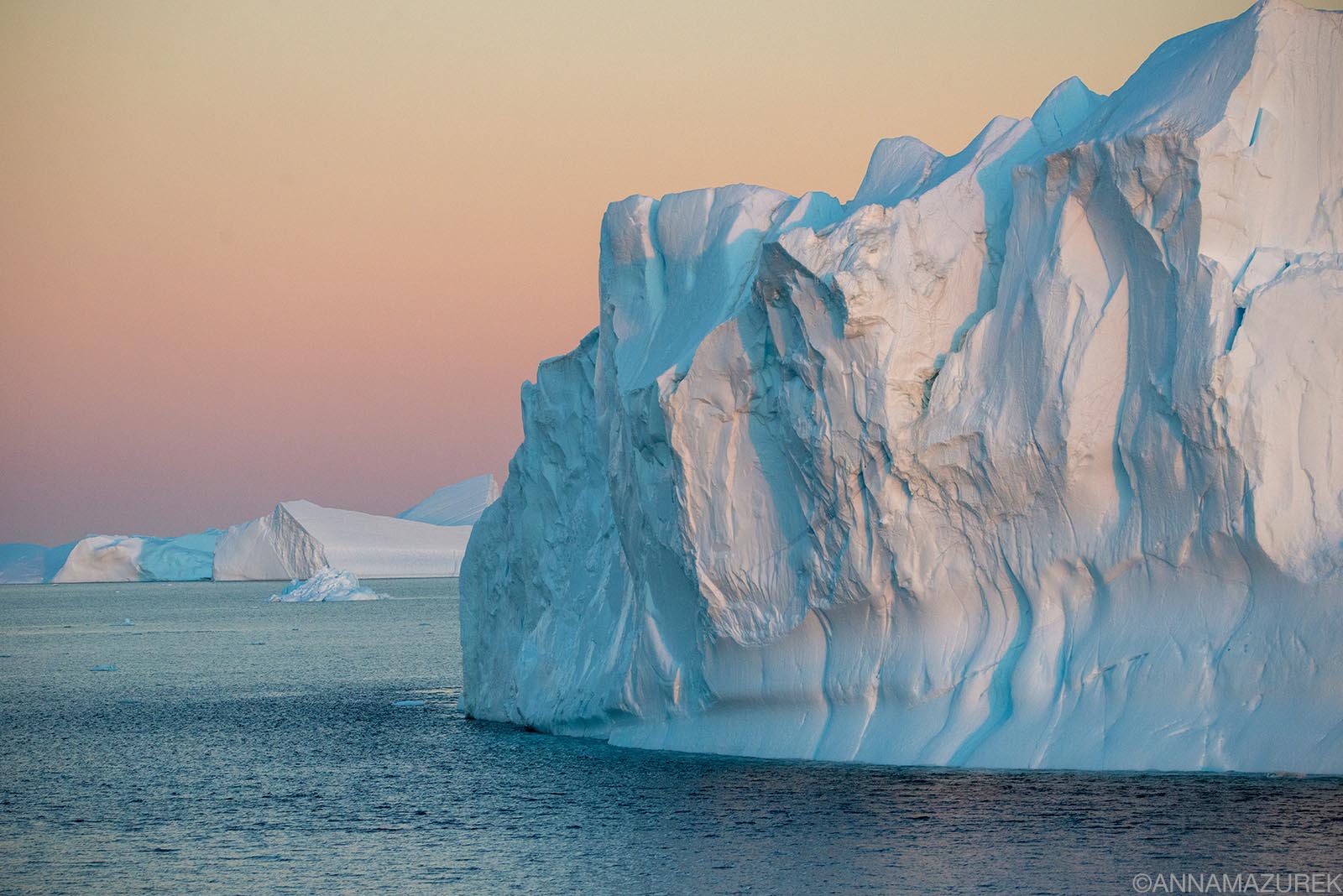 Icebergs in the Gerlache Strait at sunset in Antarctica.
Icebergs in the Gerlache Strait at sunset in Antarctica.
Antarctica is the ultimate adventure—the wildlife and scenery are unbelievable. Deciding what to pack for an Antarctica trip is almost as important as when you go.
If you’ve got an Antarctica cruise coming up or are looking at booking one, here is a complete Antarctica cruise packing list. From boots to gloves, I’ve compiled a detailed list of what to pack for Antarctica. (For a little pre-trip inspiration, check out my Antarctica photo post with images of the month I spend there for work.)
Affiliate links are used in this post. If you make a purchase, I earn a small commission at no cost to you, which goes toward the cost of maintaining this blog.
What to Pack for an Antarctica Cruise
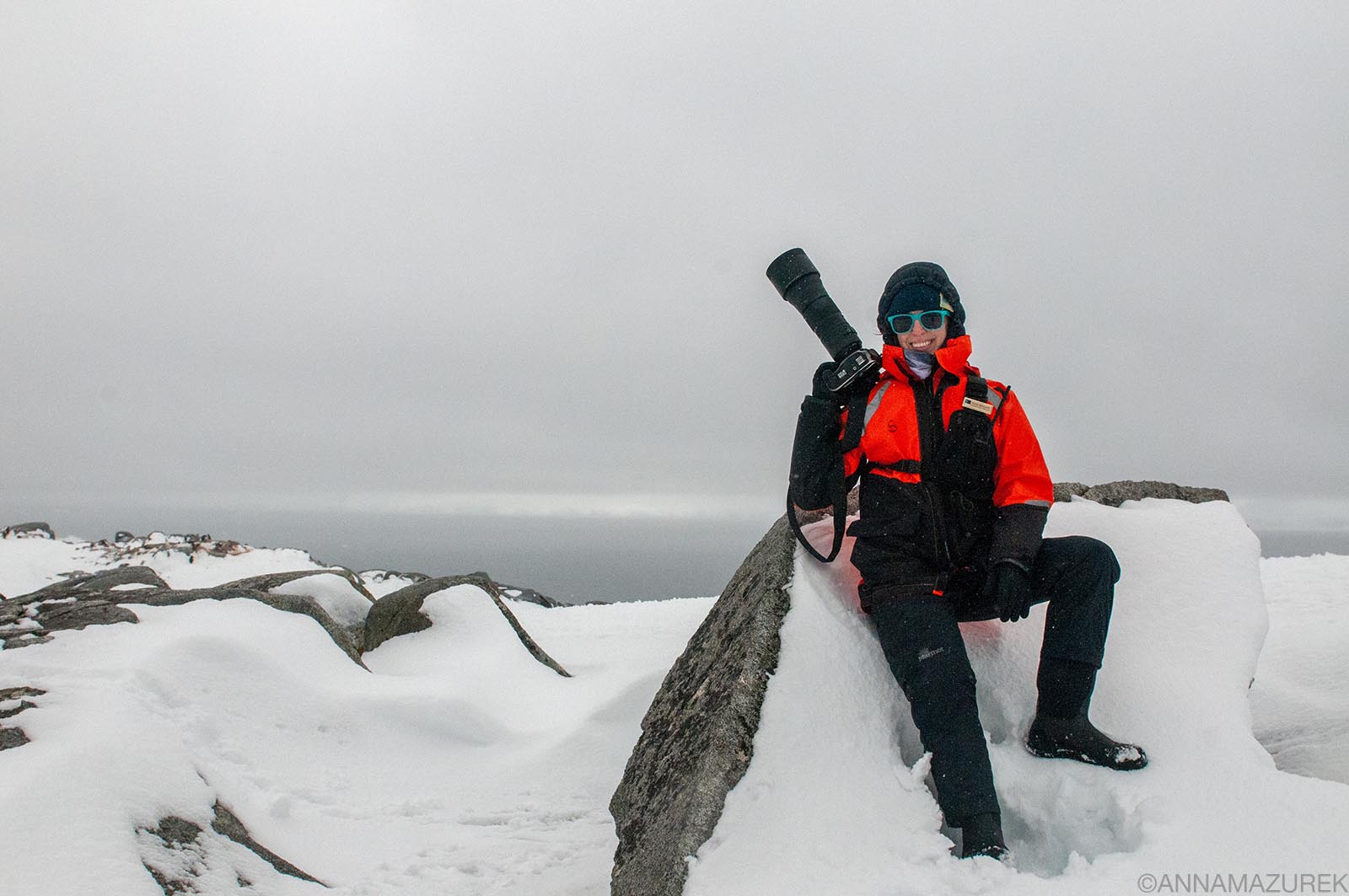 I’m wearing a float coat in this photo, which doubles as a life jacket. Underneath, I’ve got on an ultralight down jacket, two thermal tops, one tank top, two pairs of thermal bottoms, rain pants, two pairs of wool socks and waterproof boots. Also, I’m wearing a fleece buff, fleece hat with ear warmers and waterproof gloves.
I’m wearing a float coat in this photo, which doubles as a life jacket. Underneath, I’ve got on an ultralight down jacket, two thermal tops, one tank top, two pairs of thermal bottoms, rain pants, two pairs of wool socks and waterproof boots. Also, I’m wearing a fleece buff, fleece hat with ear warmers and waterproof gloves.
I packed terribly, so I want you to learn from my mistakes when packing for your Antarctica cruise. Most days the weather was right around freezing, give or take a few degrees. Some days the sun was shining, and other days, it was pouring snow. I am very cold natured so keep that in mind when reading this list!
Biosecurity in Antarctica
Waterproof and water-resistant are not the same thing. Everything you pack for Antarctica should be waterproof. Due to biosecurity reasons (to prevent invasive plant species), you must wash off your boots and vacuum all your clothing before your first shore landing. Then, you must wash and sanitize your boots or anything that touches the ground between landings, which is so much easier when you have waterproof clothes/bags.
Antarctica Cruise Packing List
- Waterproof hooded raincoat: If you’re takinga cruise, they will most likely give you a warm insulated jacket. If not, you’ll want a very warm waterproof jacket or one you can put warmer layers under. I’m a big fan of Marmot’s raingear, which can be used as a shell to layer under. Buy a size bigger than normal if you plan to layer under.
- Insulated Boots: These need to be waterproof, insulated and knee-high. I recommend either Muck Boots or Boggs. You can possibly rent these through your cruise company.
- Waterproof pants: These need to be wide enough to go OVER your boots. I recommend pants that have a full zip along the leg, which makes them easier to take on or pull off. I typically buy Marmot’s pants. Buy a size bigger than needed so you can comfortably wear layers under them.
- Ultra-light hooded down jacket: This saved me! If your outer jacket isn’t not insulated, then add a fleece over this. I wore a Uniqlo lightweight down jacket under a Columbia fleece. Since Uniqlo doesn’t make the same style I have, I recommend Patagonia’s Nano Puff or Nano-Air hooded jackets.
- Thermal tops: Packing three or four thermal long-sleeve tops. I layered two of these tops most days. I like these Patagonia Capilene and Columbia Omni-Heat styles, which they make for both women and men.
- Thermal bottoms: Pack 2-3 pairs. I wore a pair of Patagonia Capilene thermals underneath a pair of fleece-lined leggings every day. (My fleece-lined leggings were discontinued from Athleta but these Arc’teryx Essent Warm ones are similar.) Some days I put a pair of fleece jogger sweatpants over them. Then, my waterproof pants on top.
- Merino Wool Socks: Pack at least four pairs. I wore two pairs most days. I find Darn Tough socks to be the most comfortable and love their lifetime warranty.
- Gloves: Pack 2-3 pairs. I love the Seirus Soundtouch Xtreme All Weather Gloves but also had a pair of lightweight gloves and a pair of wool ones as a backup. Make sure you can operate your camera or phone with any gloves you buy.
- Fleece buff: I had two of the Buff brand ones just in case one was wet.
- Hat with ear covers or flaps: An insulated warm beanie hat is critical for colder days—consider adding ear warms on top of your beanie! For sunny days, I wear a Columbia water-resistant baseball hat (similar to this one) with ear warmers over it to keep it from blowing off in the wind or on a zodiac ride.
- Sunglasses and ski goggles for snowy Zodiac rides (I was so jealous of everyone who had googles.)
- Sunscreen and Chapstick with SPF: You will get sunburned in Antarctica. I really love Sun Bum’s natural SPF chapstick and Bare Republic’s matte face SPF because it doesn’t leave your hands greasy, so there’s less chance of SPF getting on my camera.
- Dry bag backpack: The most common brand I saw was Overboard. I took a normal backpack with a rain cover, which was a huge mistake.
- Lightweight dry bag for your camera and phone: I used a 13-liter Sea to Summit for my camera with wide lens and kept my phone in this one-liter Sea to Summit dry bag in my jacket pocket. My second camera body with the zoom lens was on my backpack.
- Hiking poles or walking stick: Your cruise ship might have these, but they are really helpful in the deep snow.
- Hand and foot warmers: Two pairs for each day of the trip, excluding sea days. While the easiest thing to buy are the disposable Ignik Brand, consider a more environmentally-friendly rechargeable hand warmers.
- Meclizine Sea Sickness Medicine: We had 20-foot waves on the Drake Crossing, which is an average crossing. Most ships will provide these but consider taking the medicines that work best for you.
- Nuun electrolytes: Hydration is important, especially after being in the sun all day or dealing with rough seas. Nuun is my favorite brand because they are low sugar and taste great. (I like the lemon-lime flavor.)
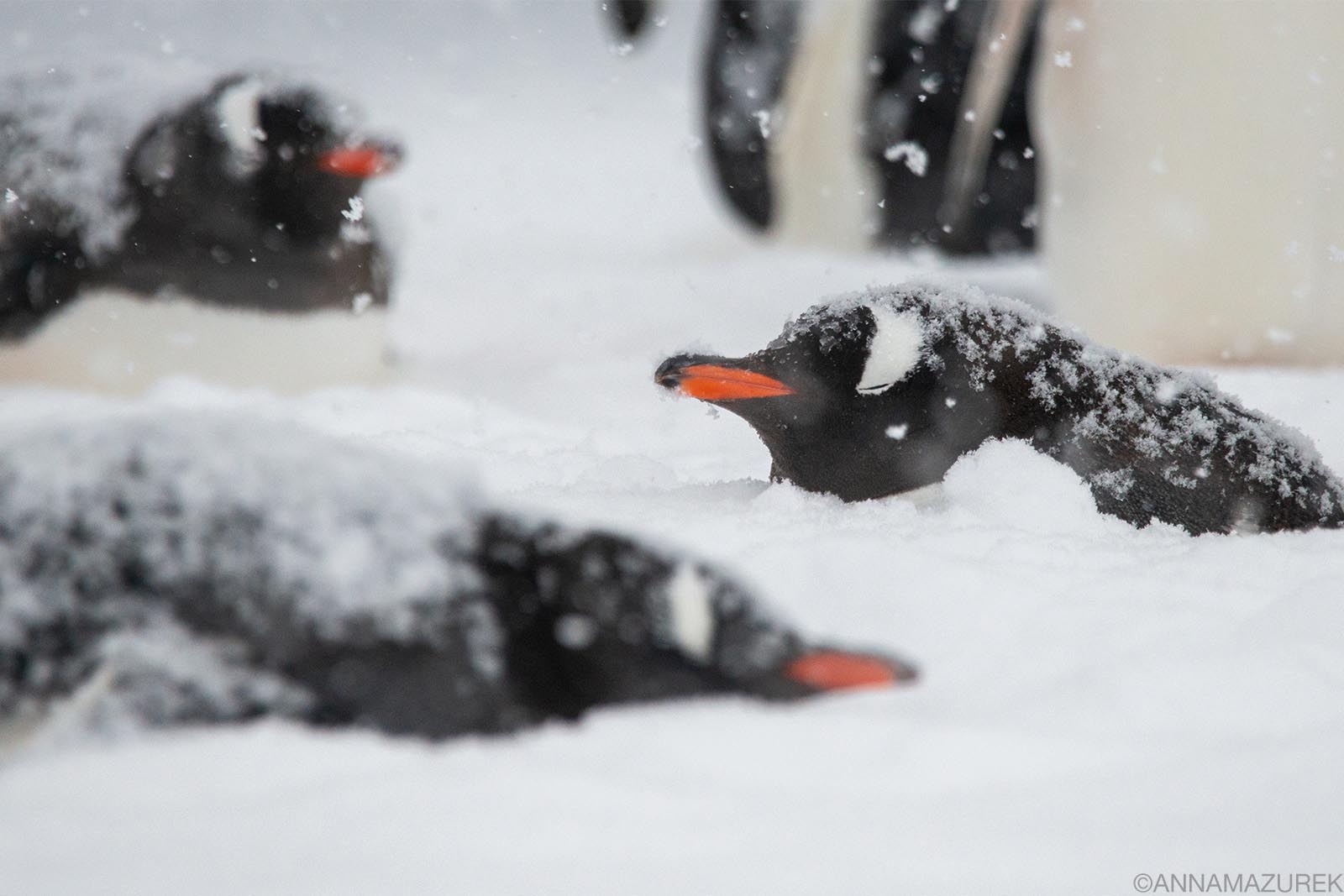 Gentoo penguins swimming near Useful Island, Antarctica.
Gentoo penguins swimming near Useful Island, Antarctica.
The Best Camera Gear for Antarctica
Due to IAATO rules, you can’t get closer than 15 feet to penguins and other animals. You need at least a 500-600mm lens for wildlife shots. I recommend having two camera bodies—one with a wide lens and another with a zoom, so you aren’t changing lenses in the extreme weather. (Consider renting gear through LensRentals.com. I’ve used them before for many shoots.) There’s really no need to bring a tripod.
- Wide angle-lens (Recommended: 24-70 mm f/2.8)
- Zoom 500-600mm: I bought this Sigma Nikon 150-600mm lens because it was the lightest weight zoom I could find. While it was very sharp, the focus was very slow. I’d almost recommend shooting a Nikon 70-200 with the 1.4x teleconverter and/or a Nikon 500mm prime because the focus is faster. You can rent these cheaply from LensRentals.com.
- Rain covers: I recommend the LensCoat RainCoat in both the large and small sizes.)
- Camera Dry Bags: I used this lightweight Sea to Summit bag for one camera body with a wide-angle lens.
- Circular polarizing filter: This really helps with reflections and reducing glare on the water and snow.
- I highly recommend the PeakDesign’s Slide camera straps, wrist straps or Capture clip that attach to your backpack strap.
Best Time to go to Antarctica
The best time to take an Antarctica cruise is from November to March. Based on what you want to see or do, consider the following:
Penguins: They will be nesting early in the season and have eggs by mid-December usually. Some will start hatching at the end of December. January and beyond is the best time to see chicks in their fledgling stage, where they look like little feather dusters. If you want to see baby penguins, go in January to be safe.
Whales: February and March are when whale numbers are at their peaks. The January trips that ran after my December trips saw a very large number of whales. (We saw a good number of killer whales in December, along with some humpbacks.)
Fast Ice and Snow Activities: There’s always more snow earlier in the season in November and early December. If you want a chance to see fast ice (sea ice that’s fastened to the coastline) and walk around on it, going earlier in the season (November to mid-December) is your best chance. Sometimes, you can still find it in January, but it’s never guaranteed.
Related Posts
Travel Guides, Budget Tips & Expert Interviews
Why American Airlines Elite Status No Longer Makes Sense for Most Travelers
American Airlines recently changed its upgrade system, making elite status harder to justify. This post breaks down what’s changed and whether elite status still makes sense.
I Travel Full-Time. Here’s Seven Things I Always Pack Under $25.
Nonstop travel has made me a packing pro. On my last six-month stint abroad in Japan and Southeast Asia, these seven things under $25 were the most useful.
How a Road-Trip Pit Stop to Pet a Camel Led to an Unlikely Friendship
A spring break detour off I-55 to pet a roadside camel sparked an unexpected, decades-long friendship with her 79-year-old owner. What began as a class photo project turned into one of my most personal travel stories.
Let's Be Friends
ALL CONTENT © 2025 ANNA MAZUREK | TERMS OF SERVICE | PRIVACY POLICY
This site includes affilate links. We may earn a commision on any purchases made.

